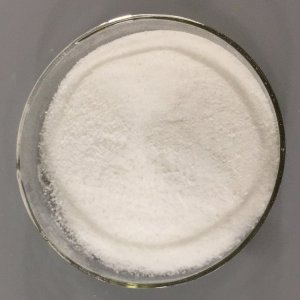Tranexamic acid
Synonymous:trans-4-(Aminomethyl)cyclohexanecarboxylic acid
Quality standard: bp2005 / CP2005
CAS :1197-18-8
Molecular formula: C8H15NO2
Molecular weight: 157.21
Melting point: > 300 ° C (lit.)
Product properties: white crystalline powder, odorless, slightly bitter, easy to dissolve in water.
Product use:
Food nutrient fortification was initially proposed as a solution to public health problems. The general purpose of food fortification is to obtain reasonable nutrients at all stages of growth and development and under various working conditions, meet the normal needs of human physiology, day and work, and maintain and improve human health.
· Compensate for the shortcomings of natural food and make its nutrients tend to be balanced
Human's natural food, almost no simple food can meet all the nutrient needs of the human body. Due to the dietary habits of people all over the world, the types and production of regional food harvest, the daily level and so on, it can rarely contain all the nutrients in the daily diet, and there are often some nutrient shortcomings. According to the nutrient query, vitamin B2 is generally short everywhere. Vitamin B1 is short in areas where refined white rice and refined white flour are eaten. Vitamin C is often lacking in areas where fruits and vegetables are lacking, while iodine is often lacking in the mainland. If these problems can be solved through targeted nutrient enhancement in the local basic diet, they can reduce and avoid diseases and enhance human physique.
Storage: store in a cool place, avoid direct sunlight, and cannot be exposed to supercooled and humid environment.
Tranexamic acid is a synthetic amino acid antifibrinolytic drug, which can competitively inhibit the combination of lysine and plasmin of fibrin, so as to inhibit the cracking of fibrin clot and produce hemostasis. It is mainly used in various bleeding caused by hyperfibrinolysis in clinic. Tranexamic acid is a synthetic lysine analogue, which can competitively bind to the lysine binding site on plasminogen and plasmin, so as to competitively inhibit the degradation of fibrin, reduce fibrinolytic activity and play a role in promoting coagulation. Theoretically, the use of tranexamic acid can lead to insufficient fibrinolytic activity, so it may increase the risk of postoperative thrombotic events.
IUPAC
4-(aminomethyl)cyclohexane-1-carboxylic acid
SMILES
C1CC(CCC1CN)C(=O)O






